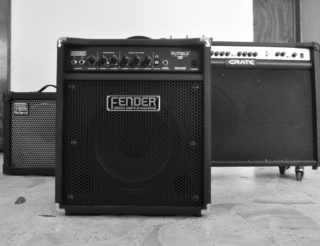Extended Guitar Chords: How to play the 9th, 11th, and 13th Chords
Author: Brett Heenan

The terms “Jazz chords, extensions, flat 9, sharp 11, or 13th” can often feel a bit scary to comprehend. When someone talks about a 9th or an 11th, they’re referring to the notes that “extend” above the common structure of a triad. In case, you are unsure about your notes on the guitar fretboard, I strongly recommend you to read my earlier post on: “How to find & memorise the notes on the guitar fretboard like a pro“.
7th chords may seem a bit more familiar, but this too is really just an extension of a triad. This article seeks to clear up some of these terms and show beginning guitarists how they can begin to play and incorporate “Jazz” chords into their repertoire.
In my previous article “7th Chords: What are they and how to play the, on the guitar” I discussed how we can extend many of the simple chord shapes we know and turn them into 7th chords. Extending these 7th chords even further is where we enter the realm of 9ths, 11ths, and 13ths.
First, let’s clear up where these numbers come from.
We’ll stick with the key of C as it’s a little easier to understand because it has a key signature without any sharps or flats.
In the key of C we have 7 notes, after the 7th note B, we arrive back at the octave C, which is the root. The first note C is 8 notes away from the next C above or below it, hence the word octave (octo means 8 in Latin). If we were to count up another note, we would arrive at 9 and so on.
This is where we derive the tones 9, 11, and 13 from.
Before we delve any further, a common question I hear is why we don’t refer to a chord with the tenth degree included (in this case E) as a Cmaj10 chord. This is because a tenth above a chord is the same as the 3rd degree of the associated scale of that chord. A tenth refers to an interval rather than a chord tone. When we play a tenth above a given chord, it does nothing to change the chord itself. The same goes for a 12th (same as the 5th) or 14th (same as the 7th), etc. When we refer to a 9th, 11th, or 13th in the context of a chord, we’re referring to the extensions above the common structure of a triad or 7th chord. We name these tones specifically because they change the sound and makeup of the chord itself.
There is the exception of a sus chord (suspended) or a 6th chord. A sus chord refers to a triad or 7th chord whose 3rd degree is raised to the 4th degree. So C-E-G would become C-F-G. You will usually see a sus chord functioning as the V chord in a given key because it gives a sense of delayed resolution. In the key of C the V chord is a G chord. Play this progression to get a sense of the suspended sound.
6th chords usually refer to chords that have the chord tone of a 7th replaced by a 6th.
In C this would be C-E-G-A. You’ll notice that a 6th is the same note as we would refer to as a 13th. 13th chords refer to V7 chords (dominant) that have a 6th degree and 7th degree. This may be a bit confusing, but just remember that if you’re playing a V7 chord and it has a 6th degree, it will most often be referred to as a 13th chord.
Let’s look at some chords and discuss their extensions and some standard shapes you can use to play them. We’ll be looking at a ii – V – I progression in the key of C.
Note: The 5th degree is often omitted from a chord because it has the least effect on the overall sound of the chord and can cause the chord to sound muddled. Also, as guitar players we only have so many fingers so naturally some notes simply cannot be included.
Let’s start with Dmin 9 and Dmin 11. Below are two different ways of playing these chord progressions
The Dmin 9 chord has the 9th degree from the root added (E) and Dmin 11 has the 11th degree added (G)
Next we’ll look at the V (Dominant) chord.
Dominant chords often have altered extensions because these create a greater sense of tension and release. When you play some of these, you’ll notice they sound quite harsh, but have a stronger sense of resolution when the I chord is played afterwards. There are many variations of dominant chords because of the number of altered notes involved. I’ve included some of the more common ones here and below are some different positions of the same chords on the guitar.
Please note:
Maj and Dominant chords have a #11 because the half step between the 3rd and 4th(11th) degrees clash and make for a very harsh sound.
A minor chord doesn’t need the 11th raised because the flat 3rd of a minor chord is a whole step away from the 4th degree.
Here are some examples of Major chords with extensions
CMaj9
Extending triads to include 9ths, 11ths and 13ths can make for some very exciting sounds and add a lot of “color” to your playing.
Hopefully this article has answered some of the questions you may have had about where these extensions come from and how they can be applied to the basic chords you already know. Try experimenting with adding some different notes to your favorite chords and see if you can identify what the tones you’ve added are.
Remember, it can really be just as simple as counting upwards. Happy playing!
In case you need to brush up on theory, we wanted to remind you that our free blog is chock full of articles to help you understand difficult chords like 9s and 11s. There are many topics that’ll help you learn this framework, but a few of these include famous chord progressions guitar, dont worry you will chords, and “what’s the worst mode of the major scale?” You’ll figure out lots of new ways to play these chords after reading through our blog!










No comments yet - be the first.